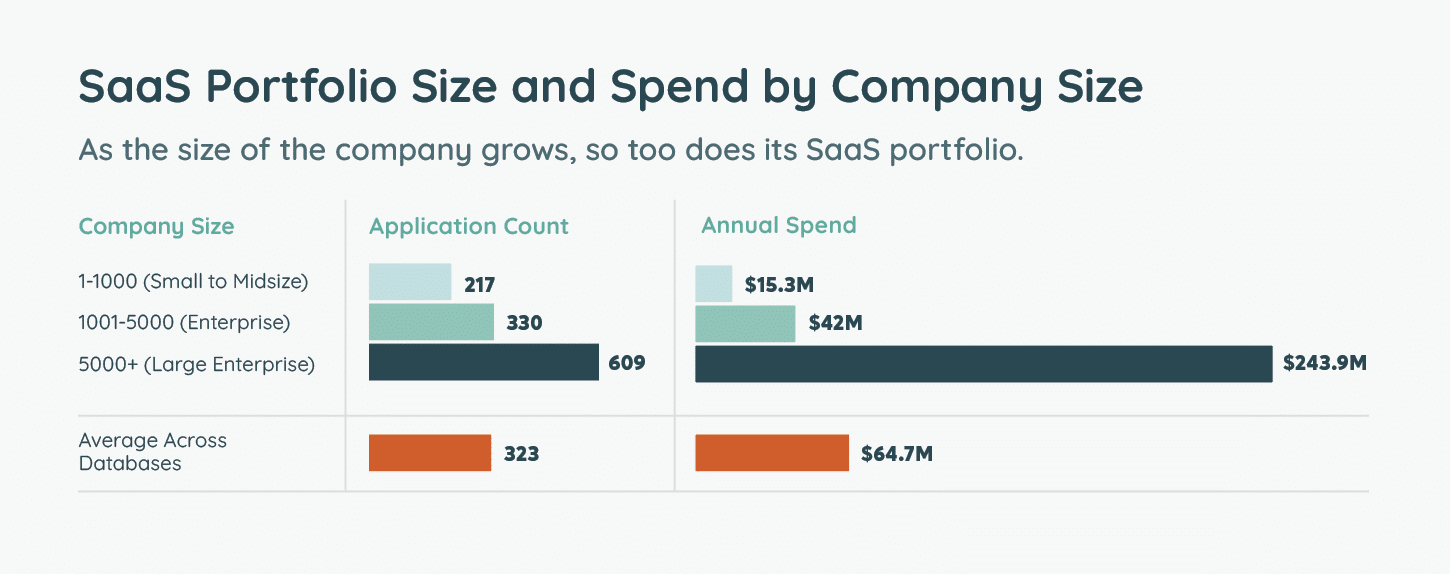
Zoom License Cost 2026: Which Plan Offers the Best Value for Your…
Table of Contents ToggleTwo Years into the Pandemic, SaaS Growth Continues...
Back
Back
Search for Keywords...
Blog

01/19/2022
Table of Contents
Each year, Zylo releases our annual SaaS Management Index to share the trends we’ve identified in the SaaS space – as well as the biggest opportunities for businesses looking to better optimize their SaaS investments. Today, we’re excited to share our 2022 SaaS Management Index key findings.
One thing is abundantly clear: SaaS is here to stay. If there was any doubt in your mind, this report will certainly assure you.
While SaaS experienced steady growth in the past decade, the COVID-19 pandemic and the initial shift to remote work put that growth into overdrive. Today, whether employees are back in the office, fully remote, or some combination of the two, SaaS continues to grow at an accelerated rate.
But how exactly are companies purchasing SaaS, managing these investments, and defining success? And, more importantly, how can you use these 2022 SaaS Management Index key findings to benchmark against your peers – and start taking action to optimize your own SaaS investments?
Our newly released 2022 SaaS Management Index will help you answer those questions and more.
As the leader in SaaS Management, Zylo is fueled by more data than any other vendor. Our AI-powered Discovery Engine has processed five years of SaaS spend, license, and usage data, equating to more than $21B in SaaS spend under management. Our annual SaaS Management Index shares key SaaS trends we’ve identified from this data, which you can use to benchmark your SaaS investment – and translate this information into action.
Read on to explore three key highlights from this report. Then, download the full report to dig into all of our 2022 SaaS Management Index key findings – and see what other insights we’ve uncovered to help you more effectively manage and optimize SaaS.
Two years ago, companies faced an unexpected shift to remote work. And many scrambled to equip their employees with the tools needed to remain connected and productive when working from home. At the same time, employees often took matters into their own hands, procuring the SaaS they needed via credit card.
The result? SaaS portfolio size and spending exploded at many organizations – as we explored in detail in our 2020 edition of the SaaS Management Index.
While this initial tool up is nearly two years in the past (hard to believe, right?), SaaS and cloud growth certainly isn’t slowing down. In fact, our findings from the 2022 SaaS Management Index show that, today, the average organization has 323 SaaS applications in their portfolio and spends nearly $65M on SaaS every year.
It’s important to note that this figure varies widely based on the size of the organization; in general, the larger the organization, the larger the SaaS portfolio (and spending). Small to midsize organizations have an average of 217 SaaS applications and about $15M in annual spend, compared to large enterprises, which average 609 applications and $243 in annual spend.

Remember when it was the norm for all software purchases to be funneled through the IT team? Thanks to the rise in SaaS (and the ease with which it’s acquired), those days are long gone. Because SaaS is so easy to acquire, it’s probably not surprising that the portion of SaaS purchased and managed by IT is shrinking – while SaaS controlled by lines of business and individuals continues to grow.
One of our 2022 SaaS Management Index key findings was that today, IT controls just just over a quarter (27%) of SaaS spend – and directly manages a mere 23% of the average organization’s SaaS applications. This is a 35% decrease in control of spend and a 9% decrease in control of quantity, year over year.
On the other hand, the portion of SaaS controlled by business units continues to grow. Currently, lines of business control 66% of SaaS spend, which is a staggering 22% increase year over year.
The remainder of SaaS spending is made by teams and individuals and reimbursed as expenses, a challenge often referred to as Shadow IT. At the average organization, about one in five employees expenses SaaS.
In and of itself, SaaS growth isn’t problematic. After all, the right SaaS enables employees (and the companies they work for) to be effective and efficient. What’s more, it’s certainly not wrong to give employees the opportunity to choose the tools they use. This can boost employee satisfaction and retention– not to mention adoption of the tool.
However, a decentralized approach to SaaS procurement and management can also lead to some big problems.
When SaaS is purchased and managed throughout business units (particularly when it’s expensed, which, as a reminder, one in five employees do), it often creates a lack of visibility across the organization. This makes it nearly impossible to manage it. When SaaS isn’t properly managed, it leads to inefficient spend, unnecessary costs, and some hefty security and compliance risks.
Our annual SaaS Management Index uncovered plenty of evidence of these unnecessary costs. One example is that the average organization is only utilizing 60% of their provisioned SaaS licenses. That means the remaining 40% of licenses (and the money spent on them) are going to waste. That’s just one of many common examples of inefficient SaaS spending.
The good news is, there are plenty of opportunities for SaaS optimization. However, the challenge is for organizations to strike the right balance between empowering business units to choose their own SaaS – while also implementing governance to manage cost, compliance, and risk.
To discover more 2022 SaaS Management Index findings, download the full report here.
Here at Zylo, some might consider us a bit data-obsessed. We’re constantly analyzing data gained from managing $21B in SaaS spend to identify trends – and delivering actionable insights to help you more effectively optimize your SaaS investments.
Of course, one way we deliver actionable insights is through our annual SaaS Management Index. But we’re also excited to announce a solution that’ll give you 24/7 access to the insights that matter most to your business: Zylo Benchmarks.
Zylo Benchmarks enables you to:
Learn more about how Zylo Insights empowers you to be a know-it-all – and get the best SaaS products at the best prices. Reach out today to see it in action.

Table of Contents ToggleTwo Years into the Pandemic, SaaS Growth Continues...

Table of Contents ToggleTwo Years into the Pandemic, SaaS Growth Continues...

Table of Contents ToggleKey Themes That Shaped SaaS Management in 20251....

Table of Contents ToggleTwo Years into the Pandemic, SaaS Growth Continues...
| Cookie | Duration | Description |
|---|---|---|
| cookielawinfo-checkbox-analytics | 11 months | This cookie is set by GDPR Cookie Consent plugin. The cookie is used to store the user consent for the cookies in the category "Analytics". |
| cookielawinfo-checkbox-functional | 11 months | The cookie is set by GDPR cookie consent to record the user consent for the cookies in the category "Functional". |
| cookielawinfo-checkbox-necessary | 11 months | This cookie is set by GDPR Cookie Consent plugin. The cookies is used to store the user consent for the cookies in the category "Necessary". |
| cookielawinfo-checkbox-others | 11 months | This cookie is set by GDPR Cookie Consent plugin. The cookie is used to store the user consent for the cookies in the category "Other. |
| cookielawinfo-checkbox-performance | 11 months | This cookie is set by GDPR Cookie Consent plugin. The cookie is used to store the user consent for the cookies in the category "Performance". |
| viewed_cookie_policy | 11 months | The cookie is set by the GDPR Cookie Consent plugin and is used to store whether or not user has consented to the use of cookies. It does not store any personal data. |
